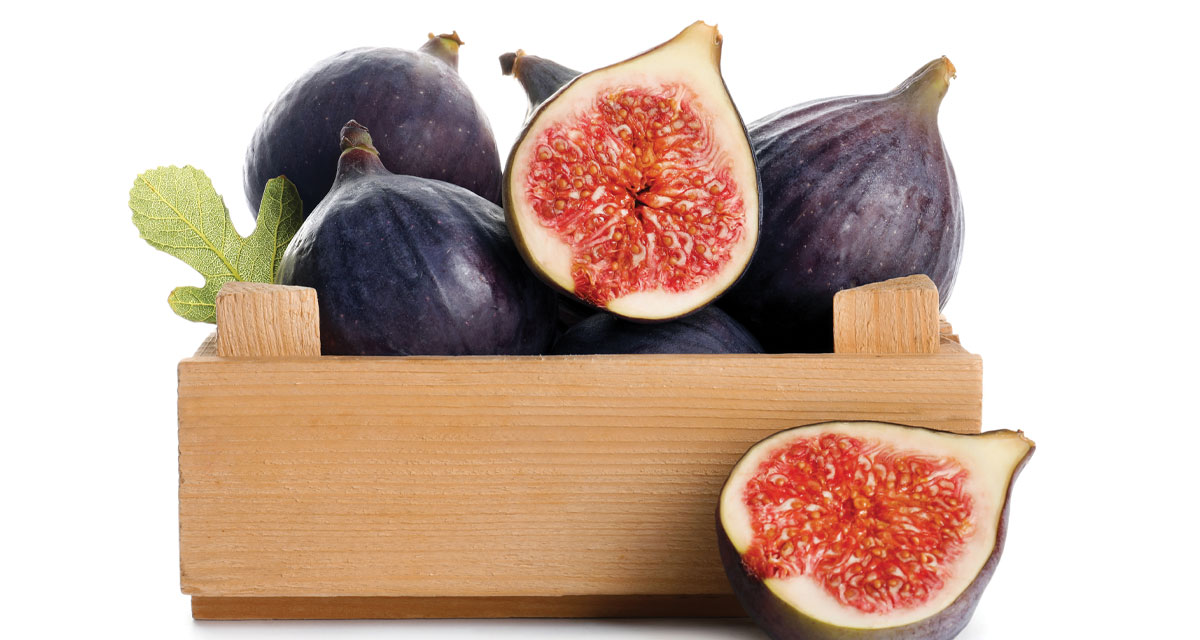When I found Israel, it was like finding grapes in the desert; when I saw your ancestors, it was like seeing the early fruit on the fig tree.” ~ Hosea 9:10
What do dinosaurs and fig trees have in common? Well, they both lived at the same time. To judge by his documented accounts of their biological nature, figs were subjects of fascination by scientist Charles Darwin. Termed a “keystone species,” figs are a resource of an ancient life cycle. Remove the fig, and the ecosystem falls. Most people do not know that fig trees, comprising over 800 varieties, are an ecological wonder, providing nourishment, shade, and water, connecting plants and fungi, insects, birds, legged creatures, and humans. In addition, the fig tree can stabilize the balance of soil, prevent landslides, and the loss of rare, wild species. Ecologist Mike Shanahan writes, “Wherever fig trees are found, so is life.”
Zone Seven Varieties
North Carolina harbors many tropical and cold-weather plants in our temperate climate, allowing for unique foliage like the fig. The cold-hardy varieties can withstand our mild winters with protection, while thriving throughout the spring, summer, and fall seasons. As a rule, fig trees can rarely survive the transitions of mailing; therefore, it is best to acquire plants through a nursery or local grower.
The following list includes cold-hardy fig varieties:
- Brown Turkey: A 20-foot tree sounds exceptionally tall; yet, pruning can maintain a manageable size—between eight and nine feet. Remember, the Brown Turkey has a shallow yet invasive root system; so, while it’s a popular choice, be aware of its future potential before choosing a site.
- Celeste: Deemed the “sugar fig,” the self-fertilizing Celeste produces small, sweet, brown-purple fruit. Pruning can help tame the height from reaching 15 feet. Noting that its size matches its width, finding a suitable specimen is as important as its location.
- Hardy Chicago: As its name implies, Hardy Chicago is an ideal option for colder climates, thriving in zone six and seven. The cultivar can reach heights nearing 15 feet while spreading to nine feet. Fig lovers enjoy the sweet taste of the purple covering that ripens in late summer.
- Magnolia: Whether the label uses the “Magnolia” or “The Brunswick,” the variety reaches 10 feet tall by 12 feet wide. The popularity of this medium-sized fruit tree is due to the fruit. Ideal for preserving, the shell’s covering is large and eye-catching in a burgundy-purple hue.
- Petite Negra: An excellent choice for smaller yards or containers, such as a whiskey barrel with casters, the self-pollinating Petite Negra reaches maturity at three feet tall and produces a rich, deep-purple fruit twice a year. Pruning helps maintain its small stature.
- Violette de Bordeaux: This productive fig reaches eight to ten feet. The fruit appears in a deep-purple hue and tastes of molasses and the strawberries of June. Fortunately, if you are anxious for fig season, the Violette de Bordeaux is ready to pluck from its branches in June.
- White Marseilles: Fig lovers can thank Thomas Jefferson for discovering the French fig variety, which develops a greenish-yellow outer shell. Bring a stable ladder at harvesting time in late July; the trees reach a height and width of ten feet.
Seasonal Care
A desirable home site for planting requires a location with direct sun exposure, next to a south-facing wall. Knowing the extent of width and height, be sure to plant far from a foundation. Consider using an enlarged plastic container to protect the base and roots of the fig tree. Inserting a layer of straw, leaves, and mulch will offer air and protection from the cold, allowing buds to develop. As the tree grows, consider enlarging the base. Before freezing temperatures arrive, wrap the tree with burlap to gently insulate the buds, ensuring survival through days of dormancy.
Water is the primary nourishment that will help fruit trees transition from producing flowers to growing fruit to maturity. Trees that lack fruit most often were deprived of water. From spring through fall, mark the calendar on days of plentiful rains and take the opportunity to water when there is a lack.
*Lisa is an N.C. State Extension Master Gardener Volunteer and a state-certified beekeeper.



















